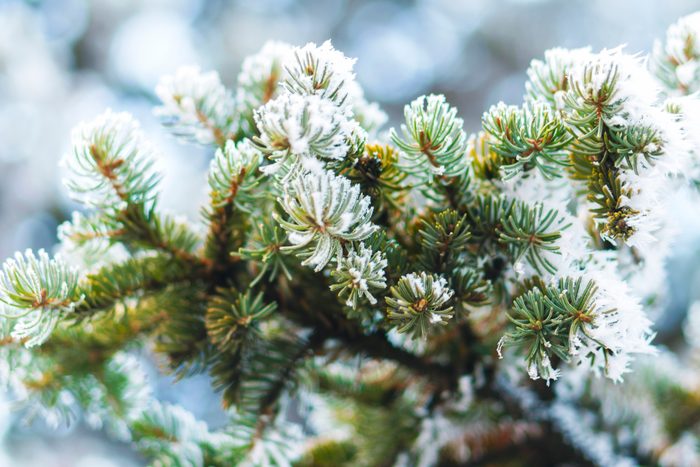For some, a lawn carpeted with leaves is a perennial hassle of autumn. For others, those leaves offer a windfall of free mulch and fertilizer. Whether you like them or not, fallen leaves play an important role in your yard’s life cycle.
As they gradually break down, they return nutrients to the soil and eventually become soil themselves. Too thick of a layer of leaves can damage your grass, but removing leaves entirely interferes with important ecological processes.
Here are some steps to find the balance and ease your leafy workload.
Has The Thinking About Raking Leaves Changed Over The Years?
“It depends on whose thinking you’re talking about,” says David Mizejewski, a naturalist with the National Wildlife Federation (NWF). “The whole idea about raking the leaves is very much about the lawn, to make sure they don’t smother the lawn. So for grass, fertilizer and lawn machinery companies, their thinking hasn’t changed.”
But ecologically speaking, more people are becoming aware of the role leaves play in maintaining healthy soil and ecosystems. Keeping a thin layer of leaves on your lawn going into winter also saves you money on fertilizer and mulch.
“The benefit of leaving them is they act as a natural fertilizer for your lawn,” says Tammy Sons, the owner of Tennessee Wholesale Nursery. “As they break down, their nutrients are returned to the soil. Another benefit is you don’t have to rake them!”
Adds Mizejewski, who works with NWF’s Garden For Wildlife program: “We are encouraging people to keep as many of those fallen leaves in their property as they can. It’s a real opportunity for regular average citizens to get involved in wildlife conservation literally right outside their door.”
Why Do Leaves Change Colors as the Weather Changes?
Leaves lose their chlorophyll, which gives them their green color. Chlorophyll absorbs energy from sunlight and transforms carbon dioxide and water into sugars and starches. In the fall, other chemical pigments in the leaf become visible. Things like carotenes, which make carrots orange.
The brilliance and length of fall colors depend on temperature, light and moisture. A wet summer and a cool fall create bright colors, but an early frost will turn leaves brown.
Why Do Trees Lose Their Leaves?
Trees ditch their leaves to conserve moisture and other resources.
“Essentially, leaves are there to capture sunlight, so that the plant can use that in photosynthesis to create food for itself,” says Mizejewski. But as the days grow shorter, trees can no longer photosynthesize and need to hold on to moisture, which leaves require. “Trees cut their losses and say we don’t need you anymore to be sucking up our resources,” Mizejewski says.
To discard their leaves, trees grow a layer of cells between the branch and the stem of the leaf, which severs the connection. The tree seals the cut and the leaves fall.
Do Some Trees Lose Their Leaves in One Part of the Country and Not in Another?
Not really. Generally, species of trees that lose their leaves will lose them regardless of location. However, within broader classifications of trees, this will vary. Northern red oaks lose their leaves while live oaks, their southern counterparts, keep them until spring. Then they shed them as new leaves replace the old ones.
Which Trees Keep Their Leaves During Winter?

Many deciduous trees, which generally have broad, flat leaves, lose their leaves during winter, while evergreens stay green all year long. But most evergreens also lose their leaves. It’s just not as noticeable because they keep them until spring, or they replace leaves as they lose them.
Some broad-leaved evergreens include:
- Magnolia;
- Rhododendron;
- Camphor;
- Citrus;
- Certain oaks.
Some more needle-y evergreens include:
- Pines;
- Spruces;
- Firs;
- Hemlocks;
- Cedars.
“Then there are some kinds of trees that, even though the leaves die, they hang onto them, such as some oaks, beech, willows and hornbeans,” says Mizejewski. There’s no consensus on why. It could be to protect buds from animals like deer, or to direct moisture to the roots, or to hang on to the nutrients for the spring when the roots are most active.
What Happens To Leaves During Winter?
After they fall, they cover the root zone of the tree, creating a natural mulch. Then they slowly break down and turn into compost. “They essentially become the soil,” says Mizejewski. “Then those nutrients become available to the tree to reabsorb.”
Is It Bad To Leave Leaves on the Ground?
No and yes, but mostly no. Fallen leaves are a wealth of free mulch and fertilizer. They’re also good for wildlife, attracting birds and butterflies. Some butterflies and most moths depend on leaf layers for part of their life cycles. And almost all backyard birds depend heavily on the insects and spiders that live in leaf layers to feed their young.
“It takes a lot of these insects,” Mizejewski says. “A nesting pair of chickadees catch between six thousand and nine thousand invertebrates to raise their babies. That means your leaf choices can make the difference for the survival of a nest of baby birds.”
The downside to leaving leaves? A thick layer on the lawn all winter will likely smother the grass so it won’t grow well come spring. So to keep the grassy parts of your yard happy, shred leaves with a mower once they’ve dried out. Then it’s fine to leave them in place, as long as some sunlight can still get through.
Article source here: What Happens To Leaves During Winter?


No comments:
Post a Comment